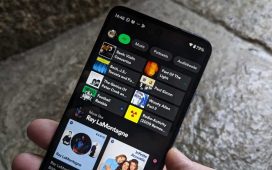Bungie jumps onto next-gen systems with extra support for Destiny 2 on PlayStation 5, Xbox Series S and X, delivering the key feature many fans have been waiting for – a move to 60 frames per second gaming. But how successful has the next generation transition been? How do the three new consoles compare and what are the key upgrades beyond the boost to frame-rate? Bungie has a reputation not just of excellent visual design and solid technology, but also in delivering very similar experiences across platforms – and so it is with Destiny 2.
To get the basics out of the way, Destiny 2 delivers true 4K resolution on PlayStation 5 and Xbox Series X, with pixel counts resolving at a native 3840×2160 on each in a vast majority of test shots. Bungie has developed a dynamic resolution system for this engine (as notably used on PS4 pro), and it’s likely deployed here too, though its appearance is minimal. There’s an element of uncertainty on how the DRS system works too; a lower bounds of 2560×2160 is noted as a very rare extreme on each next-gen machine. However, where there are brief signs of sub-native rendering, it may simply be the case lower resolution effects buffers producing aliasing. On the whole it’s a net positive though. Essentially, moving from PS4 Pro to PS5, you’re doubling the frame-rate and removing the most glaring resolution drops while using DRS. Meanwhile, comparing the 4K picture on Xbox One X and Series X, there’s little to differentiate them on a visual level, bar the huge performance upgrade.
For tests then, I used the initial tutorial stages for comparisons, which takes us back to classic Cosmodrome area from the first Destiny – plus set-piece battles from Destiny 2’s latest expansions. Crucially, There is cross-play compatibility within specific console families – so PS4/Pro owners can play with PS5 gamers, while the same holds true for the Xbox One and Xbox Series families. This may perhaps explain why very little has changed beyond performance: key rendering features remain unchanged, and even the disappointing texture filtering quality is entirely like-for-like comparing Series X with One X. Reflections may have changed slightly, but it’s clear that Bungie’s focus here has been on pushing frame-rate hard – something it couldn’t do on last-gen systems owing to CPU limitations.
Tom Morgan and Alex Battaglia talk Destiny 2 on next-gen consoles.
Image quality comparisons between PS5 and Series X reveal that Bungie has set a visual bar for the consoles that it doesn’t intend to deviate from. The games are effectively identical – with PS5 showing only a slightly higher frequency of resolution drops under 4K. In fact, evidence does seem to point towards the Microsoft machine not using DRS much, if at all. 60fps performance is generally excellent on Series X too, but it does have some minor frame-rate drops from the target 60fps, while PlayStation 5 is slightly more consistent in this area. In short: a touch more clarity on Xbox, but a very occasionally smoother ride on the Sony machine. For its part, Series S has a performance profile that is similar to its bigger brother, and while we did note DRS in effect here (with the max target of 1920×1080), it barely manifests at all. It’s a solid version of the game.
Another key next generation enhancement is the ability to tweak field of view, expanding out the visible play area to the user’s taste. It’s a slider that’s available on all next-gen systems, and no doubt, a welcome addition in competitive play. For the record, I didn’t note any performance hit in expanding field of view. Also intriguing is a somewhat contention addition: 120fps gaming in the PvP Crucible area of the game, available only to Series X and PlayStation 5 users (where Series S tops out at 60). On a technical level, both PS5 and Xbox Series X drop target rendering resolution to 1440p at 120Hz – which is, coincidentally, the limit for 120Hz gaming on select HDMI 2.0 televisions. In order to keep frame-rates high, horizontal dynamic resolution scaling is in effect – I noted a minimum of 1520×1440. In play, Series X again has more dips underneath 120fps, though each can drop to the 80-90fps region in the Iron Banner mode, specifically when lots of Super Charge moves stack up.
All told, the addition of a 120Hz rendition of the Crucible is a wonderful extra, but I do worry about last-gen console gamers still locked to 30 frames per second having to take on 120fps and 60fps players on their shiny new consoles. It’s definitely an uneven contest when next-gen users get so much more visual feedback along with correspondingly lower input latency, plus the FOV slider for an expanded view of each map.
Ultimately, while next-gen improvements beyond frame-rate are thin on the ground, Destiny 2 on Xbox Series and PlayStation 5 uses the enhanced capabilities of the each machine wisely in delivering a competitive improvement while online. Running the game at 60fps and beyond was previously the preserve of PC and Stadia gamers only, and finally we have it here. With all this considered, it’s a great time to jump back into the game – the Beyond Light expansion is well worth checking out, while Bungie clearly has ambitious plans for Destiny 2 in 2021: cross-play across all systems is promised and with high frame-rate performance now available for console users, there’s now closer parity with the excellent PC version. We can’t wait to see what Bungie has in development with next-gen consoles as the baseline, but in the meantime, the new content and performance boosts gives Destiny 2 a shot in the arm for console gamers.














